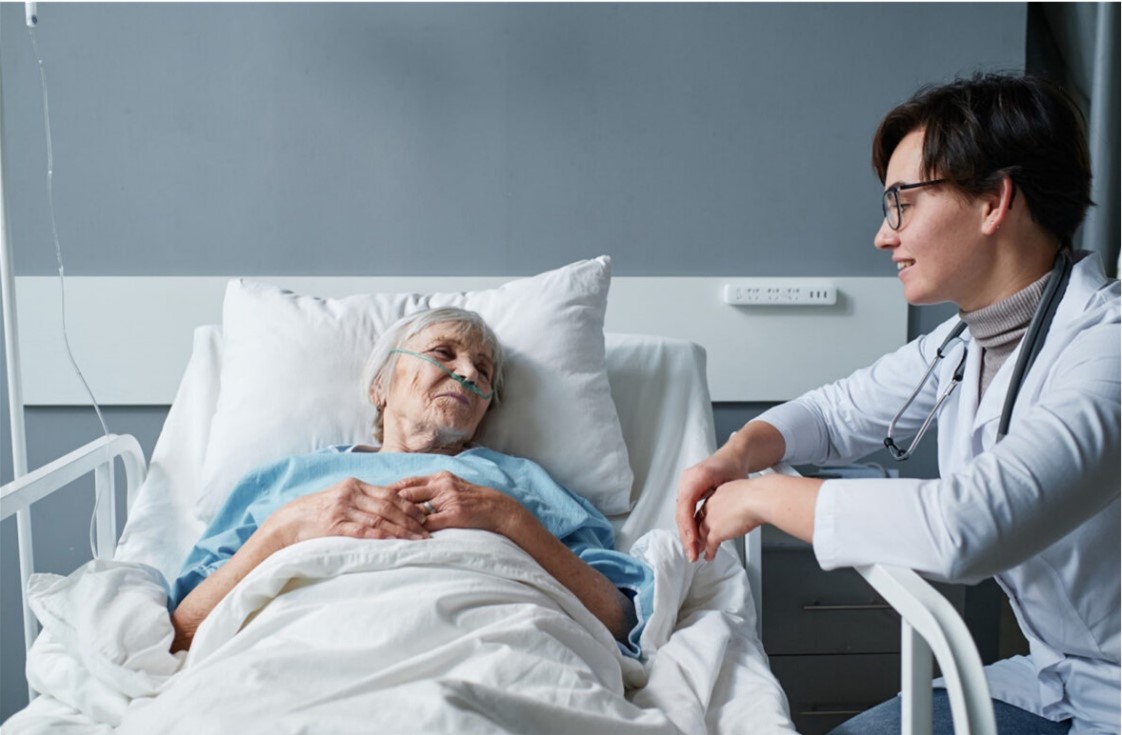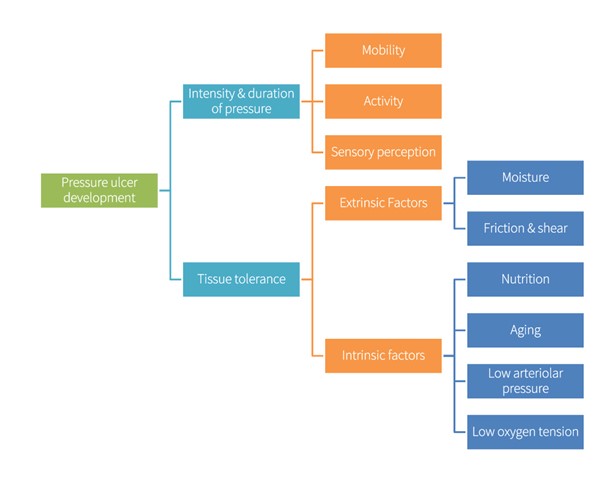Article
2024 May 16
Preventing Pressure Injuries: Understanding the Development Process

Pressure injury increases the mortality rate by 6-folds compared to other diseases and is the 3rd most costly disease following cancers and cardiovascular diseases.1
Introduction to Pressure Injury Development
Pressure injuries, also known as pressure ulcers or bedsores, can develop when a person remains in the same position for an extended period without being able to shift their weight or change position independently. This prolonged pressure on specific areas of the body can lead to localized damage to the skin and underlying tissues, resulting in pressure sores. The ulcers can progress rapidly and are challenging to heal due to reduced blood flow and tissue damage.
Factors Contributing to Pressure Injury Formation
Pressure injuries are influenced by intrinsic patient factors like mobility, activity, sensory perception, and health status, along with extrinsic factors such as sustained pressure, shearing force, and moisture. These factors collectively determine the risk of tissue damage and pressure injury development.

Understanding Extrinsic and Concurrent Factors
Extrinsic factors like sustained pressure, shearing force, moisture buildup, and friction play a crucial role in causing tissue damage leading to pressure injuries. These factors interact to create conditions where tissues, especially bony prominences, are vulnerable to injury. Understanding and managing both intrinsic and extrinsic factors are key to preventing pressure injury development.
Prevention and Management Strategies
Preventing pressure injuries involves a multi-faceted approach. Caregivers should regularly reposition immobile patients, use pressure-relieving devices like specialized cushions or mattresses, maintain optimal skin hygiene, and address underlying medical conditions that may increase susceptibility to pressure injuries. Educating patients and caregivers about the importance of skin protection, early detection of pressure injury signs, and prompt intervention are crucial steps in managing and preventing pressure injuries effectively.
"Wellell support surfaces" plays a crucial role in pressure injury prevention.
Advanced Support Surfaces for Pressure Injury Prevention. Here are the key benefits it provides:
- Reduced Risk Factors: Support surfaces effectively minimize friction, shearing force, and moisture buildup, crucial in preventing tissue damage.
- Tailored Therapeutic Modes: These support surfaces offer alternating modes for pressure redistribution, continuous low-pressure modes for optimal immersion, and specialized features like heel relief offer enhanced protection for vulnerable heels, while seat inflation helps prevent bottoming out.
- Enhanced Comfort and Outcomes: By incorporating advanced features, support surfaces not only prevent pressure injuries but also promote better patient comfort and overall healthcare outcome.
If want to know about Wellell Support Surfaces Support Surfaces (wellell.com)
Explore the Impact of Pressure Injuries on your hospital https://www.wellell.com/en/how-can-we-help
Resources:
- Afzali Borojeny L, Albatineh AN, Hasanpour Dehkordi A, Ghanei Gheshlagh R. The Incidence of Pressure Ulcers and its Associations in Different Wards of the Hospital: A Systematic Review and Meta-Analysis. Int J Prev Med. 2020 Oct 5;11:171. doi: 10.4103/ijpvm.IJPVM_182_19. PMID: 33312480; PMCID: PMC7716611.
- Pressure ulcer prevention: pressure, shear, friction and microclimate in context. A consensus document. London: Wounds International (2010). 5a517b64dacfb4fee06c221412f0b4e9.pdf (woundsinternational.com)
- National Pressure Injury Advisory Panel. (2019, March 13). Pressure Injury Prevention--Repositioning Frequency. Npiap.com. https://npiap.com/store/viewproduct.aspx?id=14123202

